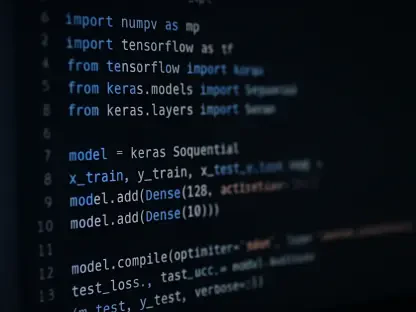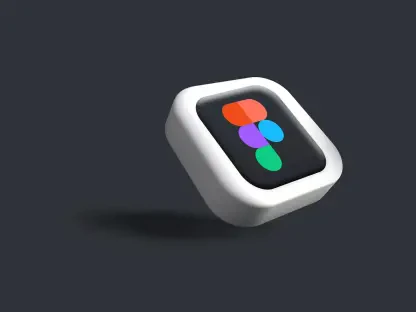In an era where technology evolves at lightning speed, GitHub Spark emerges as a transformative force in software development, introducing a groundbreaking approach known as “vibe coding.” This innovative AI-powered platform enables both seasoned developers and complete novices to craft fully functional applications using nothing more than natural language prompts, bypassing the need for traditional manual coding. Building on the legacy of GitHub Copilot, Spark elevates AI assistance by turning abstract ideas into tangible software within mere minutes. Its promise lies in democratizing app creation, making it accessible to a diverse audience ranging from hobbyists to corporate teams. This article explores the remarkable features, practical applications, and inherent challenges of this cutting-edge tool, shedding light on how it could redefine the coding landscape. As the boundaries of development expand, Spark stands at the forefront, inviting a reimagining of how software is conceptualized and brought to life through intuitive, prompt-driven innovation.
Redefining Development with Vibe Coding
GitHub Spark introduces a paradigm shift in software creation through its concept of “vibe coding,” where the emphasis is placed on ideation rather than intricate programming skills. Unlike GitHub Copilot, which primarily offers code suggestions to assist developers, Spark takes a bolder step by generating complete applications from high-level natural language descriptions. This approach allows users to articulate their vision in plain English, watching as the AI translates those thoughts into functional code. Such a method significantly lowers the barrier to entry, enabling non-technical individuals, such as designers or business stakeholders, to actively participate in app development. By integrating with contemporary web technologies like React and TypeScript, the platform ensures that the output aligns with modern standards, making it relevant for a wide array of projects. This accessibility fosters a new era of creativity, where the focus shifts from syntax struggles to innovative thinking and rapid execution.
The impact of vibe coding extends beyond individual users to influence team dynamics and project workflows. GitHub Spark’s intuitive design simplifies the process of transforming concepts into software, allowing for quick iterations based on feedback or evolving ideas. This capability is particularly valuable in environments where speed and adaptability are critical, such as startups or agile development teams. The platform’s ability to cater to a broad audience means that brainstorming sessions can now include voices that might previously have been excluded due to technical limitations. Moreover, the seamless handling of complex frameworks ensures that even AI-generated applications maintain a professional quality, suitable for initial demonstrations or further refinement. As a bridge between technical expertise and creative vision, Spark positions itself as a catalyst for inclusive innovation, reshaping how software projects are initiated and developed in collaborative settings.
Exploring the Innovative Features of GitHub Spark
At the heart of GitHub Spark lies a meticulously designed web application interface that prioritizes user experience and efficiency. The layout is structured into three distinct panes: the central area displays the AI-generated code, providing transparency into what the system creates; the right pane offers a live preview of the application, complete with engaging animations during code generation; and the left pane serves as a hub for managing prompts, customizing design elements, and adjusting settings. Users can easily revisit previous prompts to refine their work, tweak aesthetic components like themes and fonts, and utilize a built-in data storage system that persists across sessions. This thoughtful design minimizes technical distractions, allowing focus to remain on ideation and iterative improvement. The result is a streamlined workflow that empowers users to bring their concepts to fruition without getting bogged down by the intricacies of coding.
A standout aspect of GitHub Spark is its prompt-driven development process, which dramatically accelerates the journey from idea to application. Consider the example of building a Dungeons & Dragons dice-rolling app: a user begins with a simple prompt describing the basic functionality, then iteratively adds features such as dice color customization or roll history tracking through subsequent prompts. Within just a few minutes and a handful of interactions, a fully functional web app emerges, a process that could take hours or even days with traditional coding methods. This rapid transformation showcases the platform’s strength in converting vague or abstract ideas into concrete software solutions. By leveraging natural language as the primary input, Spark eliminates the need for deep programming knowledge, making it an invaluable tool for quick prototyping or testing concepts in real-time, thus redefining efficiency in software creation.
Fostering Teamwork and Personalization
GitHub Spark excels in creating an environment conducive to collaboration and customization, essential elements for modern development projects. The platform allows users to fine-tune intricate design details, such as borders, scaling, and icon styles for Progressive Web Apps, ensuring that applications reflect a unique vision. Beyond aesthetics, base prompts can be set to maintain consistent styling across multiple projects, streamlining the creative process. Sharing options further enhance teamwork, with capabilities to distribute applications in read-only mode for feedback or as interactive design spaces where team members can contribute directly. This functionality bridges the gap between technical and non-technical participants, making Spark a versatile tool for group brainstorming and iterative design, ultimately fostering a more inclusive approach to app development.
The collaborative features of GitHub Spark are particularly beneficial in scenarios where diverse skill sets converge on a single project. Teams can iterate on a shared application in real time, allowing for immediate input from stakeholders or colleagues, regardless of their coding expertise. This dynamic reduces communication barriers often encountered in traditional development cycles, where non-technical team members might struggle to convey their ideas effectively. Additionally, the customization tools empower users to tailor applications to specific needs or branding requirements, enhancing the relevance and impact of the final product. By providing a space where creativity and collaboration intersect, Spark not only accelerates the development timeline but also enriches the quality of output through collective input, positioning itself as a pivotal asset in team-driven innovation.
Advanced Tools for Professional Environments
For professional developers and organizations, GitHub Spark offers an enterprise-grade version through the GitHub Copilot+ subscription, priced at $39 per month per user, unlocking a suite of sophisticated features. This tier supports TypeScript, a more robust alternative to JavaScript, ensuring that generated code meets high industry standards for scalability and maintainability. Integration with GitHub Codespaces provides a seamless environment for editing and testing, while two-way synchronization with repositories facilitates effortless collaboration among team members. The ability to handle multipart prompts and upload visual assets or sketches to guide UI design further tailors the platform to complex project needs. These enhancements make Spark a compelling choice for professional settings where precision, teamwork, and advanced functionality are paramount.
Beyond basic code generation, the enterprise version of GitHub Spark addresses the nuanced demands of large-scale development initiatives. The inclusion of TypeScript support ensures that applications are built with a focus on long-term reliability, a critical factor for production environments. Integration with GitHub’s broader ecosystem, such as Codespaces, streamlines workflows by allowing developers to transition smoothly between ideation and implementation phases without leaving the platform. The capacity to incorporate visual inputs into prompts also aids in creating user interfaces that align closely with initial concepts or branding guidelines, reducing the need for extensive revisions. By catering to the specific requirements of professional teams, Spark establishes itself as a versatile tool that can adapt to varying levels of complexity, offering substantial value in corporate and enterprise contexts.
Accelerating Prototyping and Real-World Use
GitHub Spark truly shines as a prototyping tool, empowering users to create working mockups with integrated backend functionality at an unprecedented pace. This capability proves invaluable for demonstrating ideas to stakeholders, clients, or team members, providing a tangible representation of a concept without the lengthy investment of traditional development. Whether it’s a developer sketching out a new feature or a non-technical contributor pitching an app idea, Spark’s speed and accessibility facilitate immediate feedback loops, allowing for swift adjustments based on real-time input. This efficiency transforms the early stages of app creation into a dynamic, interactive process, significantly reducing the time from ideation to validation.
The practical applications of GitHub Spark in prototyping extend to a variety of industries and scenarios, enhancing its utility across different contexts. For instance, businesses can use the platform to quickly develop proof-of-concept applications to test market viability before committing significant resources. Educational institutions might leverage it to teach foundational app development concepts to students without requiring extensive coding knowledge upfront. Additionally, Spark’s ability to integrate with existing low-code or no-code platforms can complement broader development ecosystems, creating user interfaces for backend solutions already in place. By serving as a bridge between initial ideas and actionable outcomes, the platform supports a wide range of users in bringing their visions to life, reinforcing its role as a pivotal tool in rapid innovation cycles.
Addressing the Limitations of AI-Assisted Development
While GitHub Spark offers remarkable advantages, certain limitations must be acknowledged to fully understand its scope. A notable constraint is the monthly cap of 375 prompts and iterations for users, with additional prompts incurring a cost of $0.16 each. Exceeding these limits results in halted access to applications until the next billing cycle, potentially disrupting workflows for heavy users. Furthermore, the generated code’s reliance on Spark’s runtime environment restricts its portability outside GitHub’s ecosystem, posing challenges for deployment in independent settings. These usage and compatibility issues highlight the need for careful planning when integrating Spark into broader development strategies, ensuring that its benefits are balanced against potential constraints.
Another critical challenge lies in the nature of AI-generated code and its implications for developers accustomed to traditional coding practices. The lack of personal ownership over the output can make it feel like deciphering someone else’s work, particularly when deeper modifications are required. For experienced programmers, reverse-engineering the logic behind Spark’s creations can be time-consuming and occasionally frustrating, as the code lacks the personal touch and understanding inherent in manually written scripts. This detachment underscores a philosophical drawback: while the platform excels in speed and accessibility, it may not fully satisfy those who value granular control over every aspect of their software. Recognizing these hurdles is essential for users to set realistic expectations and leverage Spark effectively within its optimal use cases, such as prototyping and ideation.
Reflecting on a Transformative Journey
Looking back, GitHub Spark carved a significant niche in the tech landscape by offering a fresh perspective on software development through vibe coding. Its ability to translate natural language prompts into functional applications marked a notable milestone in making coding more inclusive and efficient. The platform’s intuitive interface, robust enterprise features, and collaborative tools provided a powerful foundation for rapid prototyping and team innovation. Despite facing challenges like prompt quotas and code portability, Spark demonstrated immense value in bridging the gap between technical and non-technical contributors. Moving forward, the focus should be on enhancing integration with external systems and addressing ownership concerns to broaden its applicability. As the industry continues to evolve, exploring ways to blend AI-driven tools like Spark with traditional coding practices could unlock even greater potential, paving the way for a more versatile and accessible future in software creation.









